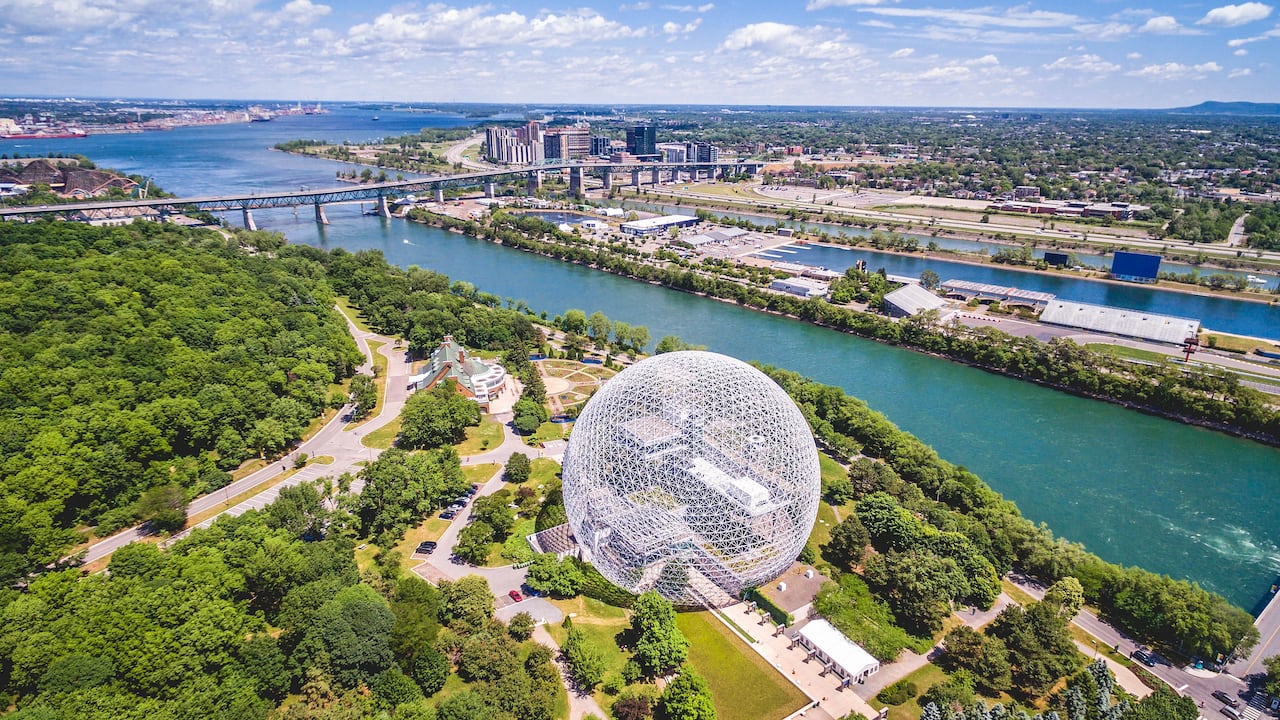Copyright cbc

Almost 60 years ago, Montreal played host to the world during the 1967 International and Universal Exposition. Expo 67 was the pinnacle of Canada's 100th anniversary celebrations and led to some of the biggest infrastructure projects the city has ever seen. The event, which welcomed 62 nations and featured close to 100 thematic pavilions, saw more than 50 million visitors in its six-month run. The world's fair thrust Montreal onto the global stage and transformed the city’s landscape. At the time, the Montreal Star described it as "the most staggering Canadian achievement since this vast land was finally linked by a transcontinental railway." But after so many years — and with more and more relics disappearing — what remains to keep Expo 67 from slipping from our collective memory? “There's still a lot,” said Roger La Roche, a historian who specializes in international exhibitions. “First of all, the islands themselves. We tend to forget that we built most of it out of nothing in 67,” he said. The fair grounds were built on two man-made islands in the St. Lawrence River. Île Ste-Hélène already existed, but it was significantly expanded to swallow up the neighbouring Île Ronde and beyond. Île Nôtre-Dame, however, was built from scratch in 10 months, using landfill from the excavation of Montreal’s new Metro system, which was inaugurated the year before Expo 67, in October 1966. Other prominent monuments of Expo 67 include Moshe Safdie’s innovative housing complex Habitat 67 and Buckminster Fuller’s oversized geodesic dome. At the time, the metal structure was home to the U.S. Pavilion, but it now houses the Biosphere Environment Museum. Pavilions, exhibits designed to be temporary According to Monika Kin Gagnon, professor emeritus of communications at Concordia University, most pavilions and exhibits at the world's fair were meant to be temporary. “Some disappeared right away,” she said, “like the Soviet Union pavilion was dismantled the day after the Expo closed and was transported back to Moscow where it still stands there today.” Some pavilions deteriorated and were torn down, while others found new homes elsewhere in Canada or were repurposed and given a new lease on life at their original locations. The Canada pavilion is now a multipurpose space that serves as a reception hall and headquarters for the Société Parc Jean-Drapeau — the para-municipal organization managing the park on the islands. Montreal’s casino was constructed around the French and Quebec pavilions, while Jamaica’s is now an event space. Meanwhile, Place Des Nations, a giant amphitheatre that was the site of several important ceremonies during Expo 67, continued to host performances until the early 1980s, including Montreal's first International Jazz Festival. It was slowly abandoned and a plan by Parc Jean-Drapeau's management to revive it as a concert space has run into funding issues. La Roche says that while there are still many reminders left of Expo 67, "it needs to be explained when you run around there." As it so happens, Gagnon helped develop an augmented, self-guided walking tour devoted to Expo 67 and its architectural remains that is featured on an app called WasteScapes. The tour draws attention not only to the better known sites like the casino and the Biosphere, but others like the Korean and Tunisian pavilions. “I think everybody from around the world comes to the city and is astonished at the architectural heritage that we still have in the city,” Gagnon said. She added she’s a "big proponent of restoration," arguing it's better to invest in existing sites than tear them down and start over. In the case of the Tunisian pavilion, Gagnon says it stands as a monument to a moment in time that was transformative for several African nations, many of which gained independence in the 1960s. "I think the more that we know about our history, and I think that the architecture carries those histories, the better stewards that we are for the land that we're on right now," she said. So while Gagnon said she’s disappointed by the state of disrepair of the Tunisian pavilion, the fact that it is still standing is reason enough to remain hopeful it could be restored. Number of original Expo 67 rides at La Ronde dwindling The disappearance of Expo 67 landmarks is something that also weighs on La Roche’s mind – especially when it comes to La Ronde. It was impossible to go to the fair without being drawn to the brand new theme park. La Ronde was a hit with visitors, but now the number of original rides is dwindling. Last week, Six Flags, which has owned and operated La Ronde since 2001, announced it would be dismantling La Spirale – an observation tower offering panoramic views of Montreal and surrounding regions. "It is a landmark, because you come in Montreal by the Jacques-Cartier Bridge ... you know you're coming into Montreal because you've got La Spirale," La Roche said. The ride has been out of service since 2018, due to what the park said were technical difficulties and security concerns and that putting it back into working order would cost millions. La Roche said he would have liked to see La Spirale turned into a La Ronde museum, with the observation deck staying on the ground, thus avoiding costly repairs to the ride’s elevator. “Instead of taking the whole thing down, why not just keep the tower itself?” he asked. “The tower is in perfect shape.” In recent years, the splash ride La Pitoune and the minirail train system suffered the same fate. “They are taking out rides, rides, rides, they are not putting anything back,” La Roche said. Part of the problem, he said, is that the rides themselves don’t generate much income, meaning that for most of them, there’s no real incentive to replace them. In terms of rides or landmarks with historical significance, La Roche said that even though Six Flags “doesn’t own the site itself, it owns everything on it" and can do what it wants. "There's no patriomonial clause," in the lease to protect them, he said. One of the only spaces to have stood the test of time at La Ronde is the children’s area where the Explorateur boat ride and the Safari from 1967 are still bringing joy to a younger generation of Montrealers — at least for now. La Ronde could be in for a bumpy ride with Six Flags under financial strain. The company, which owns dozens of theme parks in North America, reported a loss of $319.4 million for the first half of the year.


![[Review] ‘Bleach: Soul Resonance’ Brings the Same Thrill as the Original](https://d2731bbzmt3wpb.cloudfront.net/news/image/us-west-2:25d97050-7aa7-43a6-a623-8fb02e6af97e/20251022/9169e7e16bbf42c092140f9fa92fa7bb.jpg)
